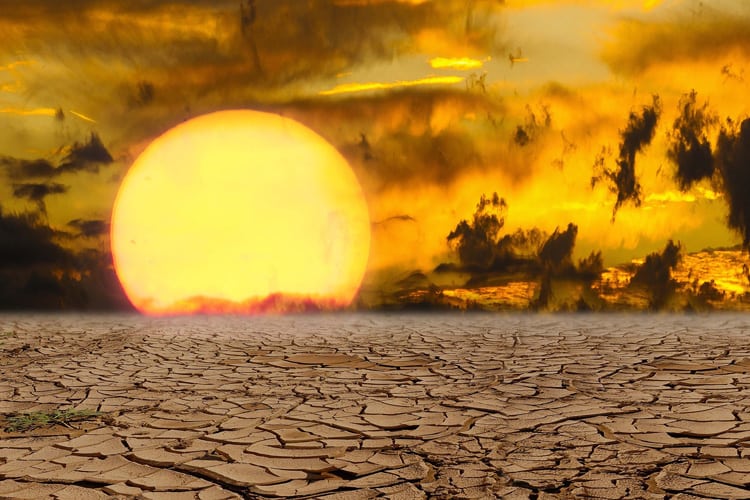State and federal officials told a Senate panel Wednesday that there may be long-term solutions to the historic drought gripping the West, and the water shortages that come with it, but that the short-term outlook remains grim.
The hearing comes against the backdrop of a 20-year-long drought has left about 90% of the West affected. Sen. Mark Kelly, D-Ariz., said tree-ring and soil evidence indicates that the region may be going through the worst drought in 1,200 years – certainly the worst in the 100 years or so that records have been kept.
“Arizona is on the front lines of this megadrought,” said Kelly, who chaired the Senate Energy and Natural Resources subcommittee hearing.
When water levels at Lake Mead and Lake Powell fell to historic lows in August, it triggered a multistate water conservation plan that will take effect next year. Under that plan, Nevada will give up 21,000 acre-feet of water that it would otherwise pull from Lake Mead, Mexico will give up 80,000 acre-feet and Arizona will give up 512,000 acre-feet, or 18% of its total.
READ ALSO: Analysis: Arizona boasts strong record on water management
Kelly, who called Lake Mead and Lake Powell “the poster children for Western drought,” said Arizona is “prepared for these initial cutbacks” after years of planning and conservation efforts.
But he and others at the hearing worried about what will happen when the situation gets worse – which they all agreed it will.
“The likelihood of deeper cuts in the future is high,” said Tom Buschatzke, the director of the Arizona Department of Water Resources. The first goal, he said, is to prevent further reductions in the levels at Lake Mead.
“Additional actions to protect Lake Mead fall into two categories: First, mandatory cuts or, second, additional conservation,” Buschatzke said. “Arizona is working toward achieving additional conservation instead of greater mandatory cuts, but that is a heavy lift.”
The first round of cuts to Arizona’s water supply will likely not be felt by most people in the state, Kelly said. Buschatzke said almost all of next year’s reductions will come from Central Arizona Project allocations, with tribes, towns, private water companies, industrial users and others being affected.
Farmers would take the biggest hit, but the state’s drought contingency plan will offset many of the cuts with water from other sources or with financial compensation. But some farmers could still be forced to leave as much as 30% to 40% of their fields fallow if the situation does not improve, Buschatzke said.
“Moving into the future, which is going to be very different for them … they’re not going to be able to farm the way they have farmed historically and it’s a real paradigm shift to the agriculture community,” he said.
The drought has been aggravated by climate change, witnesses said, which has led to warmer, drier conditions that have reduced the runoff from Rocky Mountain snowmelt that would normally recharge rivers and aquifers in the region.
Kelly pointed to the $8.3 billion for water projects that is included in the massive infrastructure bill that recently passed the Senate and is awaiting action in the House, and asked what kind of long-term relief that might bring.
“Here’s the thing,” he said. “There is no country in the world – no country in the world – that is better at solving big problems when we put our mind to it. We can solve this.”
Buschatzke said there is “no end to the list of potential projects that could benefit Arizona, the lower basin and Lake Mead,” including water recycling projects in Southern California, enhanced storage and desalination projects in Arizona and the Sea of Cortez.
He said he sits on a panel that has determined a Sea of Cortez desalination project would be economically feasible, but that such a project is still eight to 10 years away. That’s why continued cooperation between states in the Colorado basin as well as the U.S. and Mexican governments remains a key element, he said.
“The funding alone won’t do it, we have to put together agreements and programs and find the most effective way to use that funding,” Buschatzke said.
In the meantime, governments continue to plan for the worst, and recently downgraded their outlook for Lake Mead and Lake Powell. Buschatzke told the subcommittee that if future years turn out to be “wetter than this more conservative approach, I’ll do my happy dance.” But not yet.
Despite the grim outlook, both Kelly and Buschatzke said they are upbeat about long-term prospects.
“We have to come up with solutions, such as finding other sources of water or other ways to conserve water, but water storage is a critical aspect for us to address this problem,” Kelly said. “We are the most creative country in the world, we are really good at solving problems, particularly engineering problems. I know we can solve this.”
Buschatzke said the state has history on its side.
“Arizona has a history of meeting challenges both on its own and in concert with other water users in the Colorado River Basin and Mexico,” he said in his prepared testimony. “Collaboration with the basin states and Mexico is the only realistic pathway to achieve success.”
Story by Ulysse Bex, Cronkite News




